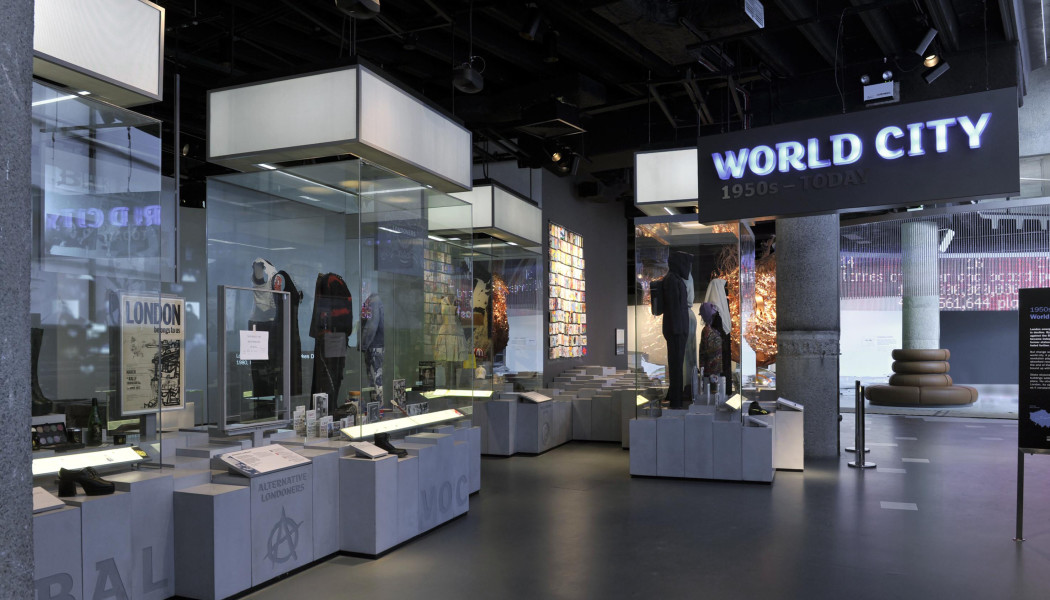A Dynamic Team
The quality of an exhibition is a reflection of a good team. Respect for the various members of the team and for their expertise is crucial. Without this you may find conservators designing exhibitions and designers curating them.
The team should be small enough to be nimble but large enough to have all the required expertise. This will encourage better brainstorming and get things moving more quickly. A good project manager will ensure that the team is time efficient, which will keep the team motivated and allow creativity to flourish.
An Inspiring Brief
The design brief is key to the designer’s understanding of the project. It should be full of inspirational content – if you can get the designer excited about working on the project you are half way there! The trick is to give enough information without being too prescriptive about the outcome. The brief should avoid ‘it should look like’ and concentrate on how you want the visitor to feel. Make sure there are sufficient objects and reference images to give a good visual representation of the content. This allows the designer to be truly creative, equipped with all the knowledge but no pre-conceived idea of what the exhibition will look like.
Find out from the designer what they feel is important in the brief, produce a draft, and workshop it with the team. It is important that the designer understands who the target audience is, what interests and excites them and what might be their motivations for visiting. I have tried many ways of doing this including creating bubble diagrams to show links in the content and pretending I am age 5 sitting on the floor to understand the needs of the target audience!
Make sure you have included all the information the designer will need such as are there any flexible elements and why? Who is the target audience, how many people are expected and what events will take place in the space? Do we need to allow for a cleaners cupboard? These may seem trivial at the outset but if you try to shoehorn a cleaner’s cupboard into a space designed for virtual reality, the reality of the cleaner’s cupboard will spoil the illusion!
The Design Concept – What’s the Big Idea?
An exhibition design without a strong concept is simply a row of showcases, graphics and audiovisuals. The designer needs to question what the overall aim of the design is. Are you inside Charles Dickens imagination looking at giant mobiles of his ideas and inspiration? Are you trying to represent every Londoner in an urban Giant’s Causeway of concrete blocks? Is it all about paper flying out of a printing press and landing in various places around the gallery representing the explosion of trade and production in the C18th?
Once you have this it will inform everything from the circulation and plan to the materials used on plinths and the content of the films. It will also help with the duller tasks of probable cost cutting later on as you will know what simply can’t be cut and what can.
Creating Drama
Concept in hand, the next thing is surely drama. What are the ‘wow’ factors and where do they appear? What (if anything) do you see from the entrance before you pay? What is the first thing you see – a 500-word intro panel? Is it an amazing object beautifully lit or a dark entrance to a hidden garden? This is a balance of what is important to the story and what works visually. Is the area dark and mysterious or brightly lit and colourful?
Sightlines are important – use vistas, peep holes, grand views and enclosed spaces to mould and shape the route. The balance of ambient lighting and feature lighting is crucial in creating drama.
The Designer’s Toolkit
Once the dramatic spaces have been sketched the finer detail needs to be created. It is not enough for the designer to simply include a nicely balanced mix of objects, interactives and digital media in every exhibition. The most appropriate or dramatic display techniques should be found for each exhibition and exhibit. A photographic exhibition may stand up on its own with little interpretation or flourishes but a collection of snuff boxes may need a little more help for the general visitor to get something out of it. A digital interactive showing a map, which visitors can search, is more memorable when set within a whole room displaying wall-to-wall graphic reproductions and originals of the map itself.
Technology allows us to explore our collections in fine detail and fires our imagination about what it was really like to be part of history. The real object takes us part of the way, while augmented reality completes the picture.
I believe that where possible technology should be hidden as screens and handsets date very quickly. Projection is good for this and can add movement to an otherwise static exhibit. It is important not to try and copy Disney or gaming techniques as museum’s generally do not have the budget for this. Our advantage is that the visitor is actually in the space with the objects. This is why the displays should be seamless, incorporating objects, graphics and audiovisuals, allowing the visitor to be surrounded by a magical world where broken pieces of ceramics can reconstruct themselves to tell a story.
The use of mobile phone technology within the gallery is improving all the time to add layers of additional information to enrich the visit. Again these access points should be integrated within the displays rather than a bolt-on afterthought.
There is no single solution to designing an exhibition but approaching each project with enthusiasm and an open mind is a great start.
Back to top





